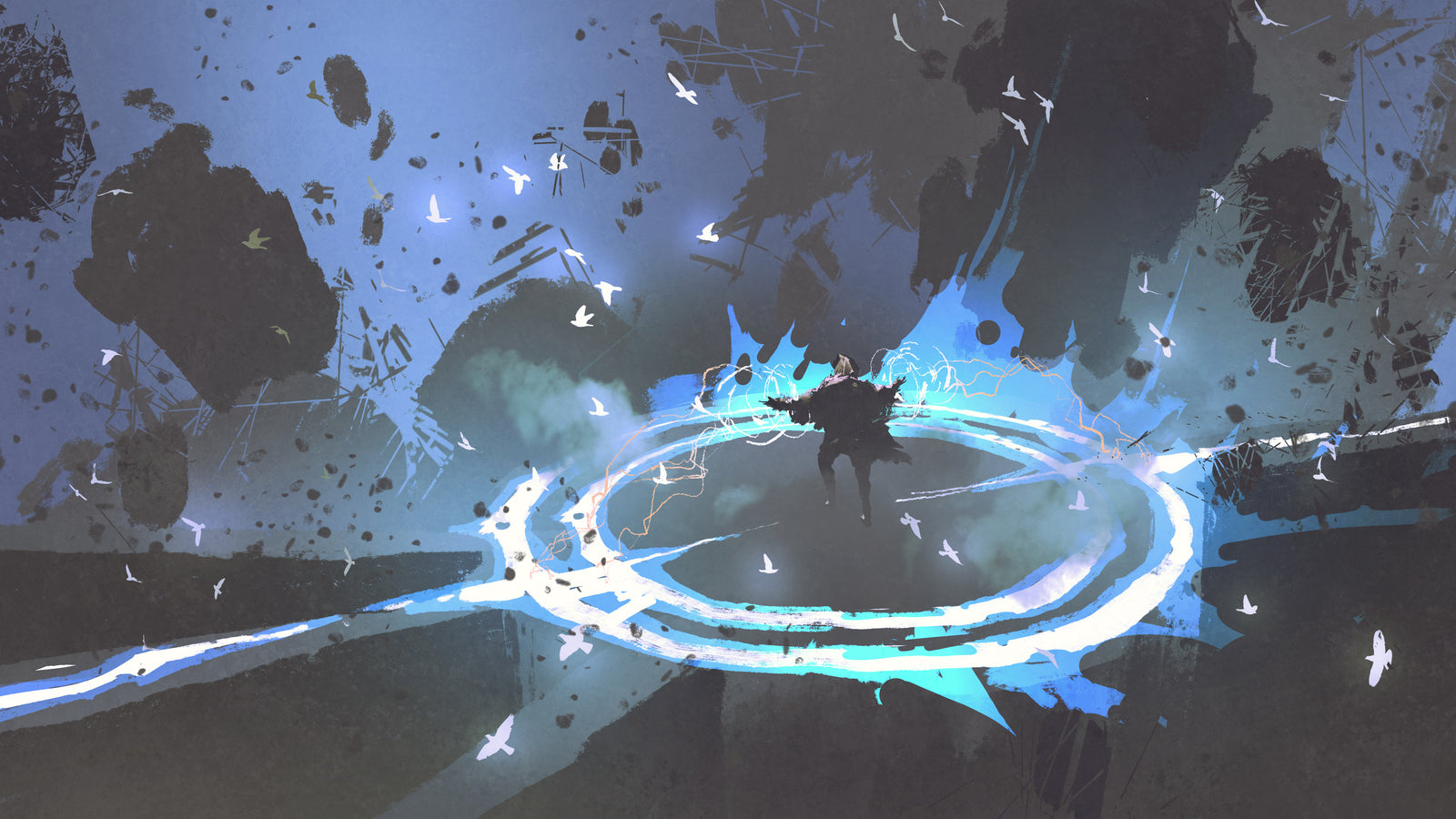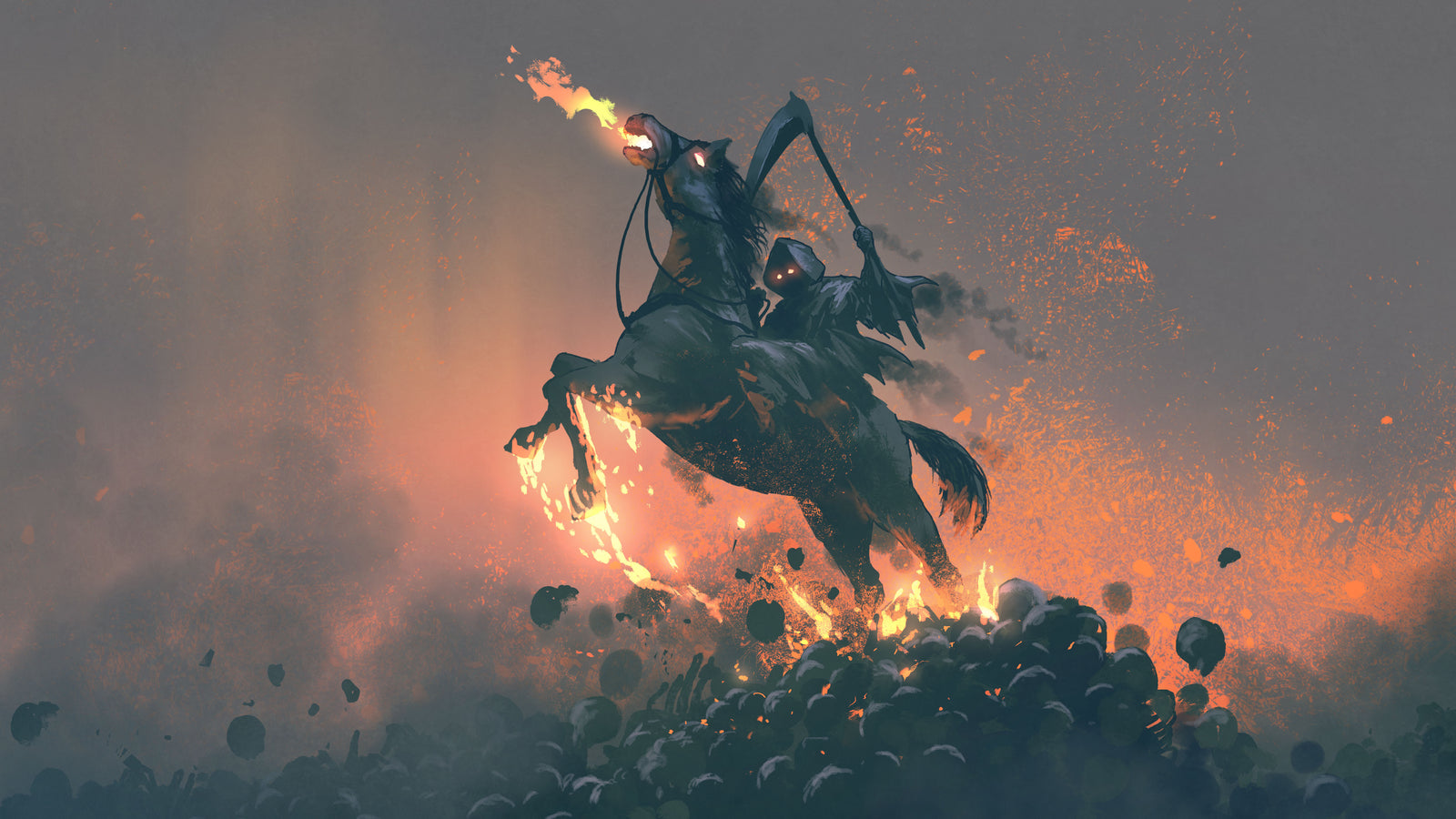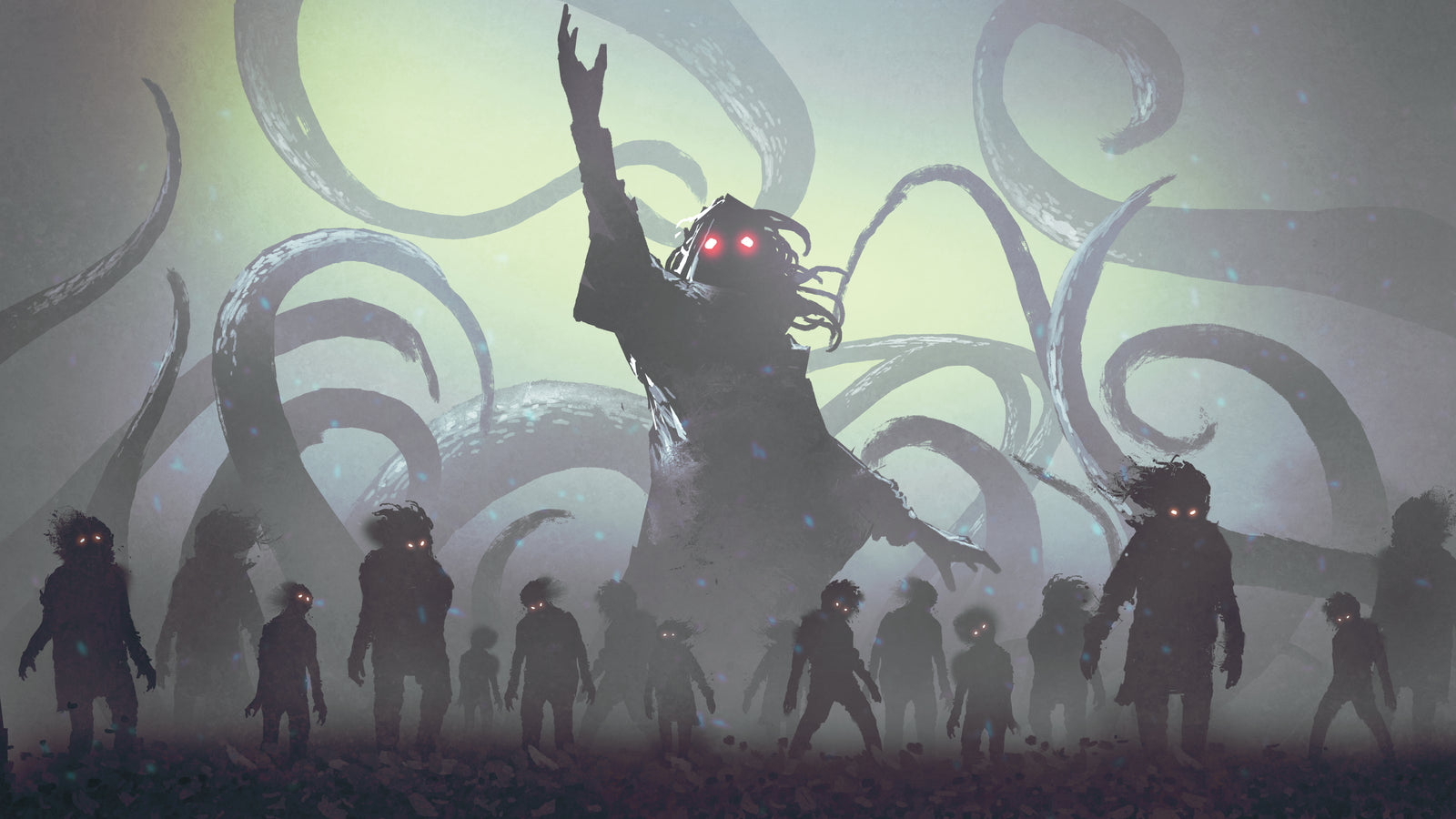Your Cart is Empty

Milestone Leveling vs. XP Leveling: Which is Better?
March 02, 2021 5 min read
Kelsey from The Arcane Library here to talk about a question in the gaming world that is heavily debated: Is milestone leveling or XP leveling better?
Now, I should preface this by saying that I almost never believe one thing is always better than the other (although Jif peanut butter is the best, and you can't persuade me otherwise).
You can expect a similar take here, but I won't just declare a tie. In this article, I'm going to present a (totally experimental) alternative to both milestone and XP leveling!
First, why is this even a debate? As is often the case, XP vs. milestone leveling comes down to what DMs think is easier/more fun vs. what players perceive that to be. And as we saw in the sandbox vs. railroad debate, looking at the pros and cons for both players and DMs helps. So let's do that!
XP Leveling Pros
- Players can see tangible progress toward the next level
- If DMs remember to reward all three pillars of play (combat, exploration, social), the system is fair to all character types/builds
- Most RPG players are comfortable with the widely-used concept of XP and how it works
- Players have a measure of control over what they do to gain levels
- Some levels take tons more XP than others (looking at you, 5th > 6th), which can be grindy
- There is no concrete system for awarding XP for non-combat achievements
- Progress toward the next level can often seem minuscule and trivial to players
- DMs have to fuss with XP during adventure design and it can feel like a house of cards
- Very little math/bookkeeping for the DM
- Can be tied to major story moments, bolstering the power of the narrative
- Characters can't level at a time that the DM didn't expect, throwing off prior encounter design
- The DM controls the pace and can avoid the grind of XP hunting
- Players can feel they have very little control over what they do to gain levels
- DMs may award levels too slowly or too quickly for the players' tastes
- Players may not feel leveling is tied to or influenced by any of the three pillars
- XP as a micro-reward is removed as an option
So, each system has something going for it and something to knock. I've found that very narrative-driven groups tend to prefer milestone leveling managed by the DM, and more exploration-focused or sandbox groups tend prefer the XP system that leaves leveling more in the players' control.
Do you as a DM or player find you prefer one or the other?
Lately, I've been tinkering with a system that's more fun than XP and its fiddly number-crunching (not to mention its underwhelming support for exploration and social encounters), but not totally controlled by the DM so players can't hunt XP. Be warned that this is totally experimental and hasn't been playtested. We're just having fun imagining, here!
Join The Arcane Library's newsletter for a free 1st-level adventure, plus more articles like this one!
This is the system, which I shall call Mithril XP (you'll see why):
Characters are broken down into four categories based on level. Copper is levels 1-5. Silver is levels 6-10. Gold is levels 11-15. Mithril is levels 16-20. These match D&D tiers, but I just like the cooler names, and I think players might get a kick out of using them, too.
Characters need to complete a certain number of encounters at or above their category to advance to the next level. An important note is that completing an encounter below a character's category isn't worth anything; it would be too trivial of a challenge. This also encourages players to seek level-appropriate challenges and prevents them from slaying countless giant rats in the swamp to rack up no-risk XP.
Here's how many encounters it takes at each tier to gain a level:
Copper: 2
Silver: 3
Gold: 4
Mithril: 5
You can certainly tinker with the above distribution, but in my case, I want to implement this in a West Marches game. So, I want low-level characters to gain fast, and I want higher level characters to have a longer tail to spend more time in the "sweet spot" between 6-15. Add more encounters to a tier to slow progression.
Next, encounters (combat, exploration, and social) are assigned a category, too. For example, a boss fight against a hobgoblin and his minions could be called a Copper encounter. A negotiation with an ancient red dragon in her lair would be a Mithril encounter.
Here is how much each encounter is worth:
Copper: 1 Copper
Silver: 2 Copper, 1 Silver
Gold: 3 Copper, 2 Silver, 1 Gold
Mithril: 4 Copper, 3 Silver, 2 Gold, 1 Mithril
Here's another important point: Similar to milestone leveling, not every encounter will have a category (and thus, a reward). Not every encounter is notable, and this will also discourage characters from seeking unnecessary combats or trying to get into an awkwardly deep conversation with the barkeep just for the XP gains. Instead, we'll be consistent and clear about exactly what encounters and achievements have an award attached.
Here are some examples you could share with the players:
Copper: Defeating a local threat, successfully exploring into nearby territory, negotiating out of a likely combat, convincing an important NPC to help, clearing a small dungeon, finding an uncommon treasure, completing a mission of local importance
Silver: Defeating a regional threat, successfully exploring into distant territory, persuading a powerful group of foes into something, changing the attitude of a dangerous foe from hostile to friendly, clearing a risky dungeon, finding a treasure that is highly sought, completing a mission of regional importance
Gold: Defeating a national threat, successfully exploring into far-away lands, negotiating successfully with a monarch, convincing a powerful warlord to turn back its army, clearing a deadly dungeon, finding a treasure of mystery and legend, completing a mission of continental importance
Mithril: Defeating a cosmic threat, successfully exploring into the multiverse, successfully negotiating with a god or supreme entity, clearing a dungeon where mighty beings fear to enter, finding an artifact that can destroy nations, completing a mission of planar importance
With the above list, we're still allowing the players to plan and choose how they want to go about gaining levels; level-up opportunities are not hidden behind the inscrutable DM screen. And the DM can still offer a reward in the moment if it's well-deserved (since we can never truly predict what the players will do).
The math about how this shakes out isn't perfect with 5E's normal progression — and it's not meant to be! The point is to give players some control and visibility while still allowing the DM to establish pacing from the outset and only give out rewards for completing valuable encounters.
For an example of the math, let's say a 1st-level character is part of a team of five that defeats a boss fight against an ancient white dragon (a Mithril encounter). That is worth 25,000 XP. So the 1st-level character will gain four Coppers from it, and thus two levels, taking the character to level 3! That's just slightly behind the level gains from a 5,000 XP share, instead, which would take the character to 4th level.
Super epic encounters could even be the fabled and secret Adamantine tier that exists above 20th level (just follow the progression pattern up).
Altogether, it would take a character 70 same-tier encounters worthy of a reward to go from first to 20th level. That's faster than D&D 5E's progression, but also remember that you're not giving XP for every encounter — just the notable ones. Now the players don't have to grind six combats a day to stay on track, and they can reach exciting high levels without three years of game time!
So, there's the Mithril System for leveling that takes a bit from both XP leveling and milestone leveling. I'm planning to test this out in my next D&D campaign, fiddle with it, and see how it lands. If you decide to try this out, or you have any cool ideas for it, let me know what you think!
Header art by Tithi Luadthong / shutterstock.com
Also in Arcane Articles

How To Design Exciting D&D Encounters
November 08, 2022 6 min read
Encounters are one of the most important parts of Dungeons & Dragons. So how do we make sure we're designing good ones?
Read More
How to Write A D&D Adventure: The Complete Guide
October 21, 2021 14 min read 6 Comments
So you want to write a 5E D&D adventure? Read on for the step-by-step process I've developed over the years for writing an action-packed D&D adventure with as little friction as possible.
Read More
Imagine First, Design Second
May 05, 2021 4 min read 7 Comments
Sometimes, I write a dud. Here's the story of how I recently wrote an adventure that went nowhere, and how I managed to learn something useful from the whole experience in the end.
Read More
